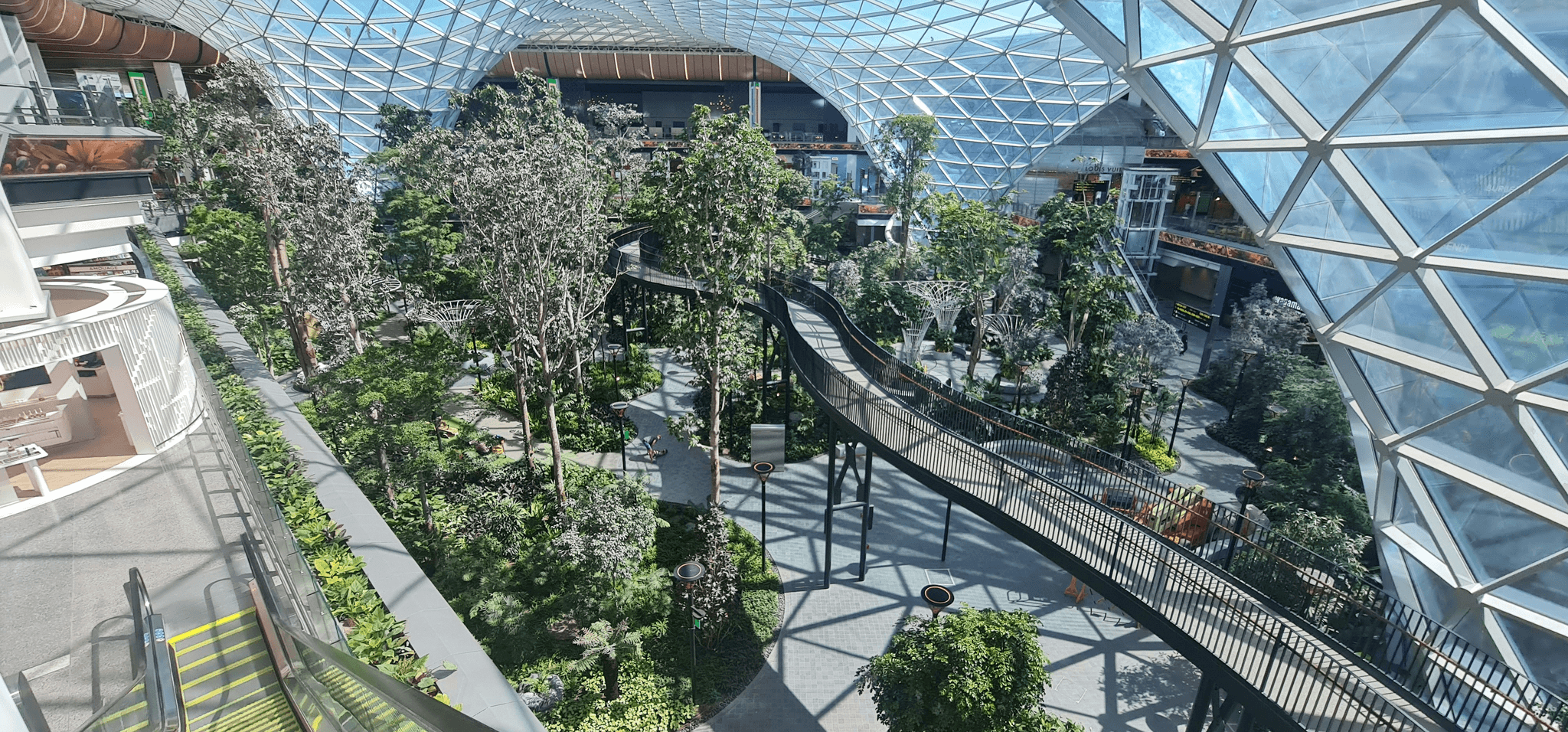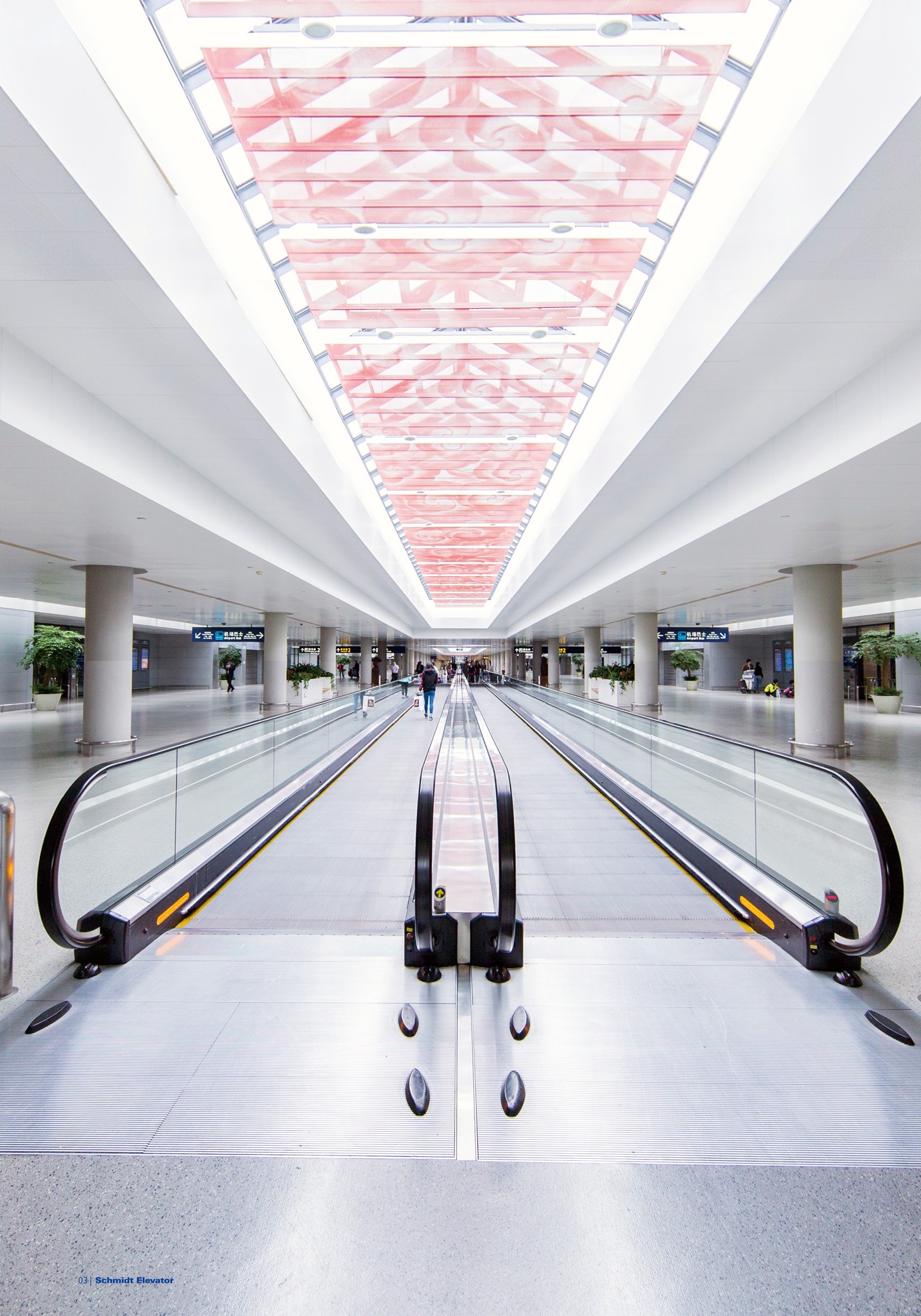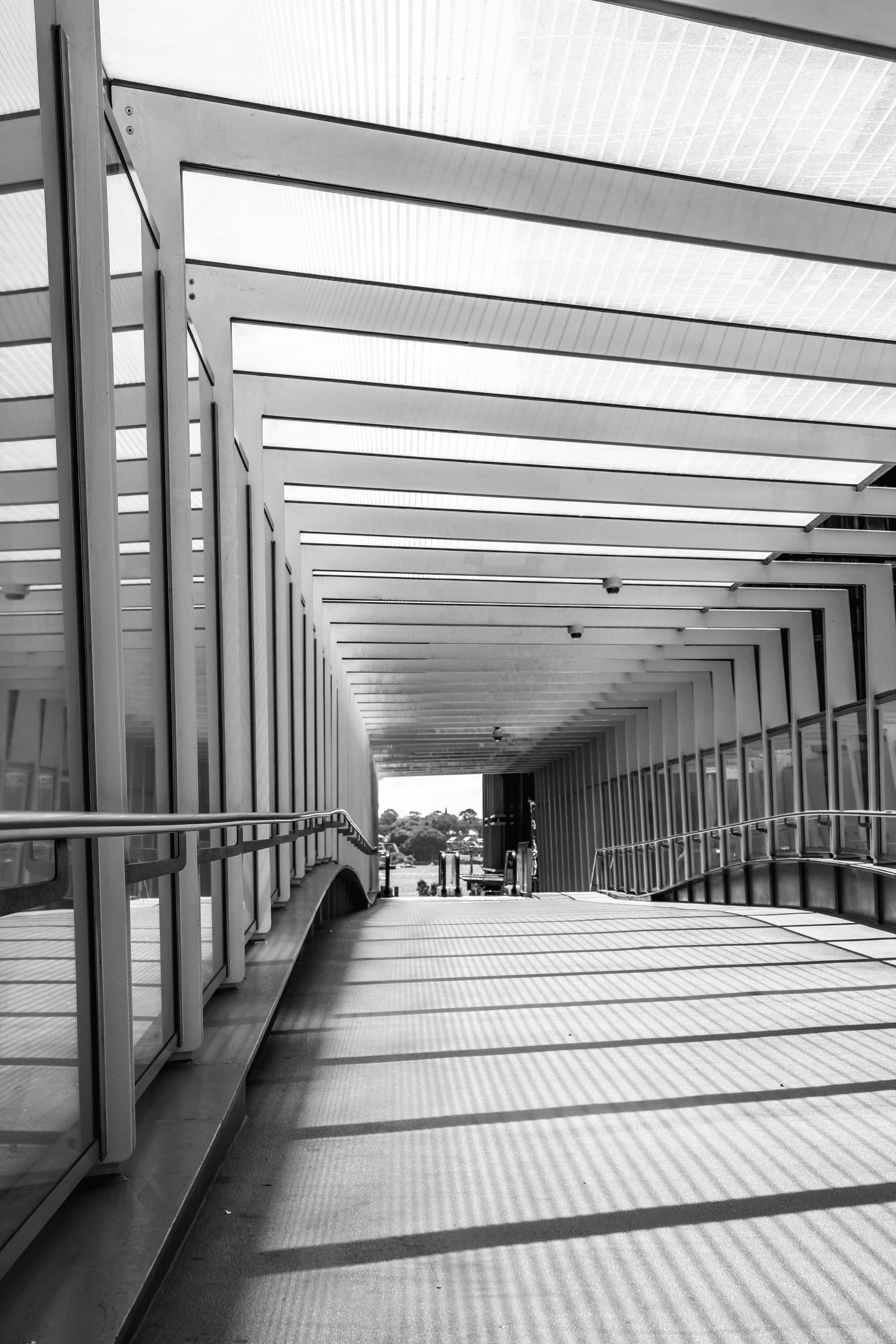Introduction

When it comes to vertical transportation, escalators and moving walkways are the unsung heroes of modern architecture. These innovative modes of transit have revolutionized the way people move within buildings and public spaces, providing a seamless experience for commuters and travelers alike.
Understanding the Basics of Escalators
Escalators are inclined moving staircases that transport people between different levels of a building. They operate on a continuous loop, allowing passengers to step on and off effortlessly as they ascend or descend.
Exploring the Functionality of Moving Walkways
Moving walkways, also known as travelators or autowalks, are horizontal conveyor belts that transport individuals across large distances within airports, shopping centers, and other public spaces. They offer a convenient alternative to walking and can significantly reduce travel time.
The Pros and Cons of Both Modes of Transportation
While escalators provide a quick vertical transit option, moving walkways offer a smooth horizontal journey for users. However, both modes have their drawbacks, such as maintenance costs for escalators and space limitations for moving walkways.
Design and Functionality

When it comes to the design and functionality of escalators and moving walkways, it's essential to understand how each mode of transportation operates. Escalators are powered by a motor that drives a chain loop, which moves a series of steps in a continuous cycle. On the other hand, moving walkways utilize a conveyor belt system to transport individuals across a flat or inclined surface. Both systems are designed to provide seamless vertical transportation within various settings.
How Escalators Operate
Escalators operate through a complex system of gears, chains, and motors that work together to move passengers between different levels of a building. The steps are arranged in such a way that they form an endless loop, allowing passengers to step on or off at any point along the journey. Safety sensors are integrated into the design to detect obstructions or irregularities in movement, ensuring smooth operation at all times.
The Mechanics Behind Moving Walkways
Moving walkways rely on powerful motors and sturdy conveyor belts to transport individuals from one location to another. The belts are carefully engineered to withstand continuous use and heavy foot traffic while maintaining optimal speed and efficiency. Advanced control systems monitor the speed and alignment of the walkway, ensuring a safe and comfortable experience for users.
The Safety Features of Each Mode of Transportation
Both escalators and moving walkways prioritize safety with features such as emergency stop buttons, handrails, and sensors that detect unusual behavior or obstructions. In the case of moving walkways, additional safety measures include automatic speed adjustment based on passenger load and advanced braking systems for precise control.
Efficiency and Space Utilization

Comparing the Throughput of Escalators and Moving Walkways
In high-traffic areas such as airports or train stations, the throughput of moving walkways far exceeds that of escalators due to their continuous movement capabilities. This makes them an efficient choice for locations where large volumes of people need to be transported quickly and seamlessly.
The Footprint of Each Mode in Different Settings
Escalators require more vertical space due to their design, making them suitable for buildings with multiple floors but less adaptable in certain layouts. On the other hand, moving walkways offer greater flexibility in terms of installation due to their customizable nature, making them suitable for various indoor and outdoor settings.
Accessibility and Suitability for Various Locations
Moving walkways are well-suited for locations prioritizing accessibility, such as train stations or stadiums, thanks to their ability to transport passengers effortlessly over long distances without interruption. Their versatility makes them an excellent choice for areas with high foot traffic that require seamless mobility solutions.
Maintenance and Durability

Sustainable Practices in Moving Walk Factory
When it comes to sustainable practices in the moving walk industry, leading manufacturers prioritize energy efficiency, use of eco-friendly materials, and recycling programs. For instance, many moving walkway manufacturers have implemented innovative designs that reduce energy consumption and minimize environmental impact. By partnering with sustainable suppliers and investing in green technology, these companies are paving the way for a more eco-conscious future in vertical transportation.
Tips for Efficient Maintenance of Escalators
Efficient maintenance of escalators involves regular inspections, lubrication of moving parts, and prompt repairs to prevent costly breakdowns. It's essential to schedule routine servicing by certified technicians who can identify potential issues before they escalate. Additionally, proactive measures such as cleaning debris from the tracks and ensuring proper alignment of handrails contribute to the smooth operation of escalators and enhance their longevity.
The Longevity of Different Components in Each Mode of Transportation
When comparing the longevity of different components in escalators versus moving walkways, it's important to consider factors such as foot traffic volume, quality of materials used, and maintenance practices. While escalator steps may require more frequent replacement due to wear and tear from heavy use, moving walkway components like rollers and drive chains are designed for durability under continuous operation. Understanding these differences is crucial for planning maintenance schedules and budgeting for replacements.
Remember that maintaining your vertical transportation systems is crucial for their longevity!
User Experience

When it comes to the comfort and convenience of moving walkways, users can enjoy a smooth and effortless journey through airports, shopping centers, and other large venues. The constant motion allows for a relaxed pace, making it easier to carry luggage or simply take a break from walking. Moving walkways also provide a sense of efficiency, ensuring that people reach their destination in a timely manner.
The Comfort and Convenience of Moving Walkways
The gentle movement of the moving walkway offers a comfortable experience for users, reducing the strain on their legs and feet. This is particularly beneficial for individuals with mobility issues or those carrying heavy loads. Additionally, the convenience of being able to cover long distances without exerting much effort is appreciated by travelers and shoppers alike.
The Unique Experience of Riding an Escalator
Riding an escalator presents a unique experience as users are lifted from one level to another in a seamless manner. It provides an opportunity for people-watching and offers a different perspective of the surroundings as they ascend or descend. However, some users may feel uneasy due to the sudden change in elevation or fear of tripping.
Addressing Common User Complaints and Safety Concerns
Common user complaints about moving walkways often revolve around maintenance issues such as breakdowns or irregular speed. It's important for manufacturers and suppliers to address these concerns by implementing regular inspections and repairs to ensure optimal performance. Safety concerns on escalators typically involve children getting caught in the machinery or passengers losing their balance during entry or exit.
Market Availability and Manufacturers

When it comes to leading moving walk manufacturers and suppliers, there are a few names that stand out in the industry. With their commitment to quality and innovation, companies like Otis, KONE, and Thyssenkrupp have established themselves as top players in the market. These industry giants not only provide state-of-the-art moving walkways but also offer comprehensive support and maintenance services to ensure smooth operation.
Leading Moving Walk Manufacturers and Suppliers
In addition to the big players, there is a growing number of specialized moving walkway manufacturers and suppliers catering to specific needs and preferences. Companies like Mitsubishi Electric, Schindler Group, and Fujitec have gained recognition for their expertise in designing and installing moving walkways tailored to different environments such as airports, shopping malls, and transit stations.
As the demand for moving walkways continues to grow, so does the variety of manufacturers and suppliers entering the market. Companies like KONE Corporation and Thyssenkrupp have made a name for themselves by offering innovative solutions for moving walkways in both indoor and outdoor settings. Their commitment to quality and attention to detail has earned them a loyal customer base, making them top contenders in the industry.
Top-notch Indoor Moving Walk Brands
For indoor settings where aesthetics and functionality are equally important, brands like Stannah, Savaria, and Cibes Lift Group have been making waves with their sleek designs and advanced technology. These indoor moving walk brands offer a range of options to suit various architectural styles while prioritizing user comfort and safety.
A Look Into Schmidt Elevator Co., Ltd. and Their Offerings
Schmidt Elevator Co., Ltd. is a rising star in the industry known for its cutting-edge solutions in vertical transportation. Specializing in moving walkways designed for both indoor and outdoor use, Schmidt Elevator Co., Ltd. has garnered attention for its innovative approach to enhancing mobility within built environments.
Remember that choosing the right manufacturer or supplier is crucial when it comes to investing in a new moving walkway system for your building or facility!
Conclusion

When it comes to making an informed decision for your building, considering the future of vertical transportation is crucial. Embracing innovation in human mobility means exploring the benefits of moving walkways and staying updated on the latest offerings from leading moving walk manufacturers and suppliers.
Making an Informed Decision for Your Building
Choosing the right mode of transportation for your building is a decision that requires careful consideration. From efficiency to user experience, weighing the pros and cons of moving walkways and escalators is essential in ensuring smooth mobility within your space.
When considering the right mode of transportation for your building, it's important to think about the long-term maintenance and operational costs of moving walkways versus escalators. Moving walkways may require less maintenance than escalators due to their simpler design and fewer moving parts. However, escalators can often be more cost-effective in the long run due to their ability to transport a larger number of people at one time, reducing wait times and increasing overall efficiency.
The Future of Vertical Transportation
As we look ahead, the future of vertical transportation is undoubtedly tied to sustainable practices and innovative designs. By investing in cutting-edge technology from reputable moving walk manufacturers, you can contribute to a more eco-friendly and efficient vertical transportation system for years to come.
Looking ahead, sustainable practices and innovative designs will play a crucial role in shaping the future of vertical transportation. Investing in cutting-edge technology from reputable moving walk manufacturers not only ensures a more eco-friendly and efficient system but also paves the way for advancements in human mobility. By embracing innovation in vertical transportation, we can create safer, more accessible environments for people of all abilities, ultimately improving the overall quality of urban life.
Embracing Innovation in Human Mobility
Embracing innovation in human mobility means embracing the convenience and safety that modern moving walkways offer. With indoor moving walk brands constantly pushing boundaries in design and functionality, there's no doubt that the future holds exciting advancements in vertical transportation. The integration of smart technology and sensors will revolutionize the way people move through public spaces, providing real-time data on traffic flow and optimizing efficiency. Additionally, advancements in materials and construction techniques will lead to more durable and sustainable moving walkways, reducing maintenance costs and environmental impact.

